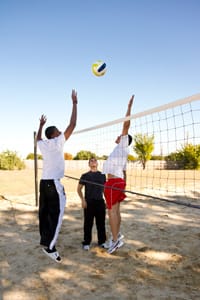Newly released statistics in the United Kingdom suggest that the practice of self-harming among children is on the rise. The numbers suggest that more children in recent years are self-harming, and doing so at a younger age. Last year, the number of children between the ages of 11 and 19 treated for self-harming through the National Health Service (NHS) in the UK rose by 11 percent, to 18,000 girls and 4,600 boys. The percentage of those children who were between the ages of 11 and 14 rose by an even more significant margin of 30 percent. In 2011 and 2012, self-harm became one of the top five concerns for 14 year olds. In 2012 and 2013, self-harm also became one of the top five concerns for 13 year olds, further demonstrating how the problem of self-harming is affecting younger populations over time.
Self-Harming Can Take Many Forms
Self-harming is when a person inflicts intentional injury to his or her body, often to the extent that marks or tissue damage result. The act of self-harming is usually done without the intent of committing suicide. Instead, it is a repeated behavior that is usually performed with the intention of finding a release or a distraction from emotional distress and regaining a sense of control. Self-harming, also called self-injury or self-poisoning, can take many different forms. The term “cutting” is often used as a synonym for self-injury because cutting or piercing the skin with sharp objects is one of the most common kinds of self-harming. However, self-harming can also involve burning or biting the skin, picking and pulling at wounds and scabs so that they will never heal, deliberately inflicting bruises, head banging or pulling out hair. Some people deliberately overdose on medications or poison themselves in other ways. Some people take a more passive approach to self-injury by neglecting their personal needs so that their health and overall well-being deteriorates. Even eating disorders and substance abuse can sometimes fall under the larger umbrella of self-injury. Self-harming can take many forms besides these, although these actions are some of the most common. Different kinds of self-injury can range from biting fingernails down past the quick, to taking extreme physical risks that result in frequent broken bones.
Are Self-Harming Cases Really Going up in Numbers?
While the recent statistics on self-injury suggest that this problem is rapidly growing in size, some experts worry that the numbers are deceiving. Self-harming has gained a great deal more public awareness over the last several years, and these experts suggest that a growth in the number of cases being diagnosed and treated does not necessarily mean that the number of people self-harming has grown. Although awareness of self-injury has been growing rapidly in recent years, how and why the phenomenon occurs is still only vaguely understood. Those who treat and spread awareness about self-harming warn that this practice should not be seen as a new problem. The misconception that self-harming is a new trend makes it easy to dismiss as an attention-seeking trend among current adolescents. In fact, there is evidence that self-injury, often called self-mutilation at earlier points in history, goes back hundreds if not thousands of years. Hippocrates, the ancient Greek physician for whom the Hippocratic Oath was named, actually advocated self-harming in the form of bloodletting, blistering the skin and purging. His theory was that these practices allowed the body to release bad “humors,” or body fluids, thereby eliminating physical or mental illnesses. Self-injury is also sometimes seen as a way to demonstrate virtue and devotion. Some devout Christians as early as the Middle Ages practiced self-flagellation, starvation, purging and scarring in order to show their faith. However, what the numbers do show without question is that self-injury is a large and disturbing problem among children and young adults, whether it is a new problem or simply a newly recognized one. Advocates do not want this concern to be dismissed as something that has always been around any more than they want it dismissed as a fad. Instead, they hope that historical information about self-injury can be used to help educate the population about this too-little-understood problem, while helping the many young people who are suffering from this problem right here and now.






